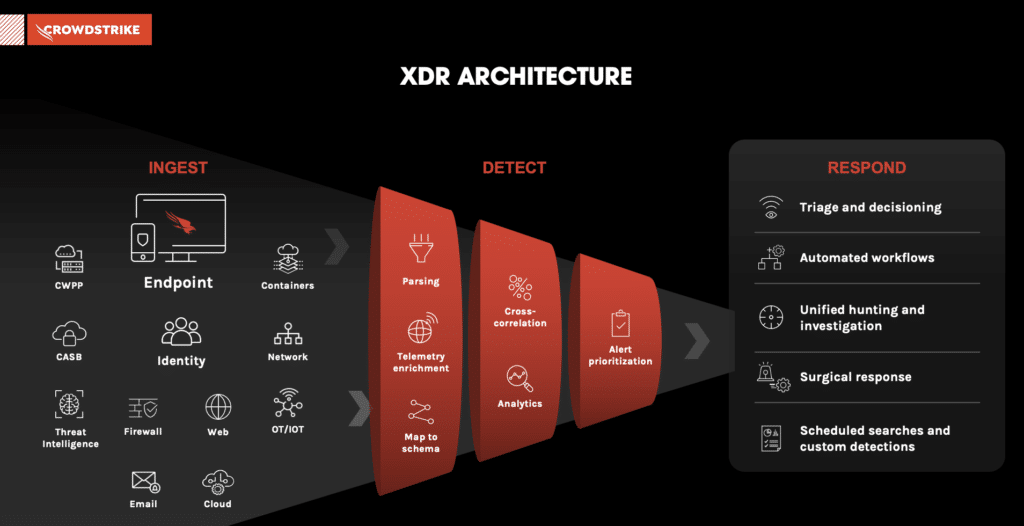What Is Extended Detection and Response (XDR)?
What is XDR?
XDR, or Extended Detection and Response, is an emerging security technology that is rapidly gaining popularity in the cybersecurity industry. It is a comprehensive security solution that offers a unified approach to threat detection, investigation, and response across multiple endpoints, networks, and cloud environments.
In today’s digital age, cyber threats are becoming increasingly sophisticated and diverse, making it difficult for organizations to detect and respond to them in a timely and effective manner. Traditional security solutions, such as antivirus software, firewalls, and intrusion detection systems, are no longer sufficient to protect against the complex and evolving threat landscape.
XDR addresses this challenge by providing a holistic view of an organization’s security posture and enabling faster, more accurate detection and response to threats. It collects and correlates data from various sources, including endpoints, network devices, and cloud platforms, and applies advanced analytics and machine learning algorithms to identify suspicious activity and potential threats.
The key components of an XDR solution typically include endpoint detection and response (EDR), network detection and response (NDR), and cloud workload protection platform (CWPP). Each of these components is designed to provide comprehensive coverage across different attack surfaces and enable a coordinated response to security incidents.
Endpoint Detection and Response (EDR)
EDR is a critical component of XDR, as endpoints such as laptops, desktops, and mobile devices are often the primary targets of cyber attacks. EDR solutions provide real-time visibility and control over endpoints, allowing organizations to monitor and detect suspicious activity and respond quickly to security incidents.
EDR solutions typically use advanced techniques such as behavioral analysis, machine learning, and threat intelligence to identify potential threats and provide actionable insights to security teams. They also offer a range of response options, such as isolation, remediation, and containment, to mitigate the impact of a security incident.
Network Detection and Response (NDR)
NDR is another essential component of XDR, as it provides visibility and control over network traffic and helps to identify and respond to threats that may be lurking in the network. NDR solutions use advanced analytics and machine learning to detect anomalies and suspicious behavior in network traffic, allowing organizations to identify and respond to threats in real-time.
NDR solutions can also provide valuable context for security incidents by analyzing network traffic and identifying the source and scope of an attack. This information can be used to inform response strategies and help organizations to contain and mitigate the impact of a security incident.
Cloud Workload Protection Platform (CWPP)
With more organizations moving their workloads to the cloud, it is essential to have a security solution that can protect cloud environments. CWPP is a critical component of XDR that provides visibility and control over cloud workloads, allowing organizations to detect and respond to threats in real-time.
CWPP solutions typically use advanced analytics and machine learning to identify suspicious activity and potential threats in cloud environments. They also provide a range of response options, such as isolation, remediation, and containment, to help organizations mitigate the impact of a security incident.
The Benefits of XDR
Extended Detection and Response (XDR) is a comprehensive security solution that provides a unified approach to threat detection, investigation, and response across multiple endpoints, networks, and cloud environments. XDR offers several benefits over traditional security solutions, including:
1. Comprehensive Coverage:
XDR offers comprehensive coverage across different attack surfaces, including endpoints, networks, and cloud environments. It allows organizations to detect and respond to threats quickly and effectively. The solution collects and correlates data from multiple sources, which helps in identifying malicious activities and providing alerts to the security teams.
2. Faster Detection and Response:
XDR uses advanced analytics and machine learning algorithms to detect and respond to threats in real-time, reducing the time to detect and respond to security incidents. With its ability to detect threats at an early stage, XDR can significantly reduce the impact of security incidents on an organization.
3. Increased Efficiency:
XDR provides a unified view of an organization’s security posture, enabling a coordinated response to security incidents. This helps in streamlining security operations and reducing response times. With XDR, security teams can quickly identify the root cause of security incidents and take appropriate action.
4. Better Context:
XDR provides valuable context for security incidents by correlating data from multiple sources. This helps in identifying the scope and impact of an attack, which in turn helps in devising appropriate response strategies. XDR also helps in providing insights into the behavior of an attacker, which helps in improving the overall security posture of an organization.
5. Reduced Complexity:
XDR simplifies security operations by providing a single pane of glass view of an organization’s security posture. With its ability to collect and correlate data from multiple sources, XDR eliminates the need for multiple security solutions. This reduces the complexity of security operations and makes it easier for security teams to manage and respond to security incidents.
6. Better Threat Detection:
XDR uses advanced analytics and machine learning algorithms to identify and respond to threats in real-time. This helps in identifying advanced and persistent threats that may have gone unnoticed by traditional security solutions. With its ability to detect unknown and emerging threats, XDR helps in improving the overall security posture of an organization.
7. Increased Visibility:
XDR provides increased visibility into an organization’s security posture, allowing security teams to monitor and identify potential threats. With its ability to collect and correlate data from multiple sources, XDR provides a holistic view of an organization’s security posture, which helps in identifying vulnerabilities and devising appropriate mitigation strategies.
8. Cost-effective:
XDR is a cost-effective security solution that provides comprehensive coverage across different attack surfaces. With its ability to streamline security operations and reduce response times, XDR helps in reducing the overall cost of security operations.
9. Better Compliance:
XDR helps in achieving compliance with various regulatory requirements, such as GDPR and HIPAA. With its ability to provide a unified view of an organization’s security posture, XDR helps in identifying potential compliance violations and taking appropriate action.
Conclusion:
XDR is an advanced security solution that offers several benefits over traditional security solutions. With its ability to detect and respond to threats in real-time, XDR helps in reducing the impact of security incidents on an organization. XDR provides a comprehensive view of an organization’s security posture, which helps in identifying vulnerabilities and devising appropriate mitigation strategies. With its ability to streamline security operations and reduce response times, XDR is a cost-effective security solution that can help organizations improve their overall security posture.



























